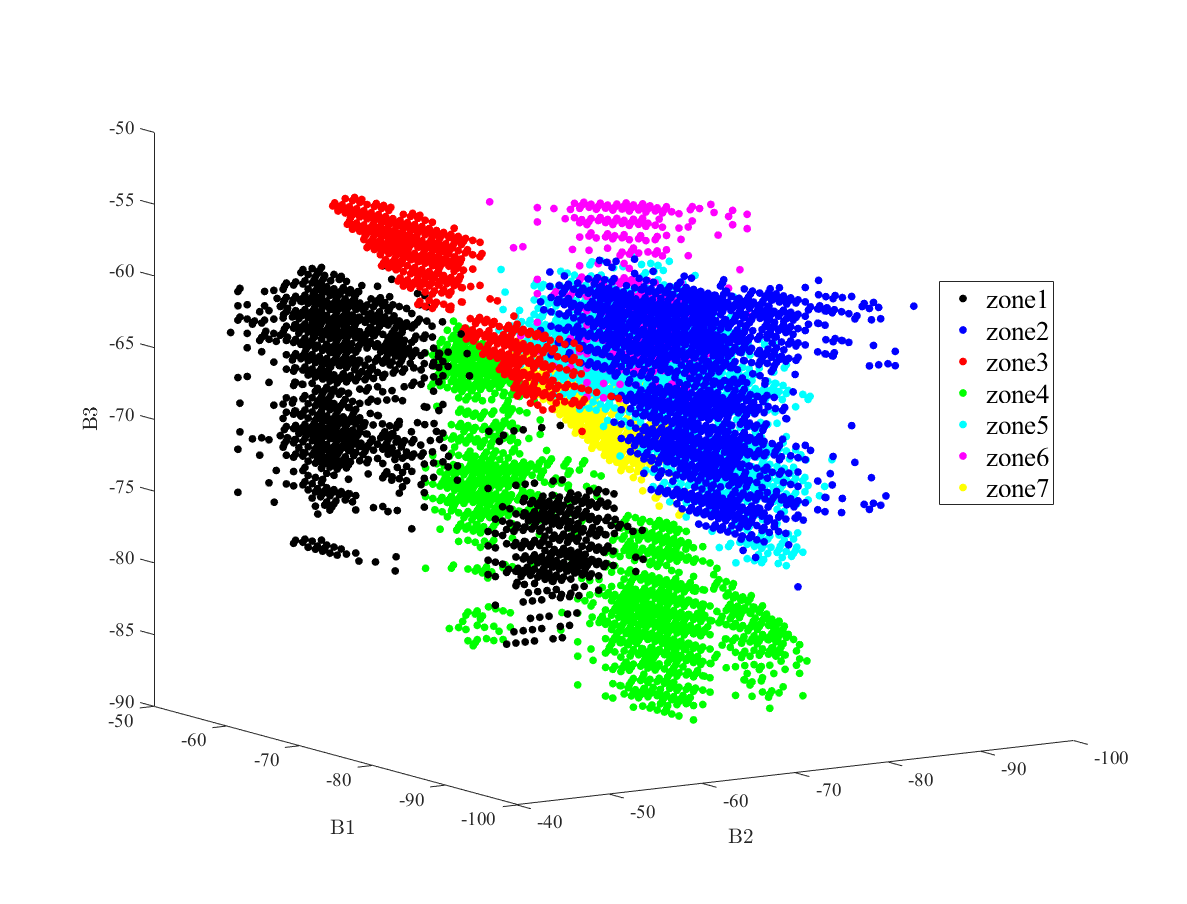Introduction
This project aims to detect the occupant in a certain space, in which the space is defined based on its social nature. For example, it is meaningful to detect the occupant in a kitchen, rather than in a random location along the corridor. Such meaningful information allows us to trigger corresponding IoT application related to the social nature of that space.

Dataset
The dataset were collected in Rio Hotel, Macau, from June 12-15 2017. The dataset is available on our Github repository. Two different devices (i.e., Asus Zenphone Deluxe and Samsung Tablet) were used to collect the data, detailed description of the data is available in this link.
The figure below indicate the all the training samples in 3D plot.

